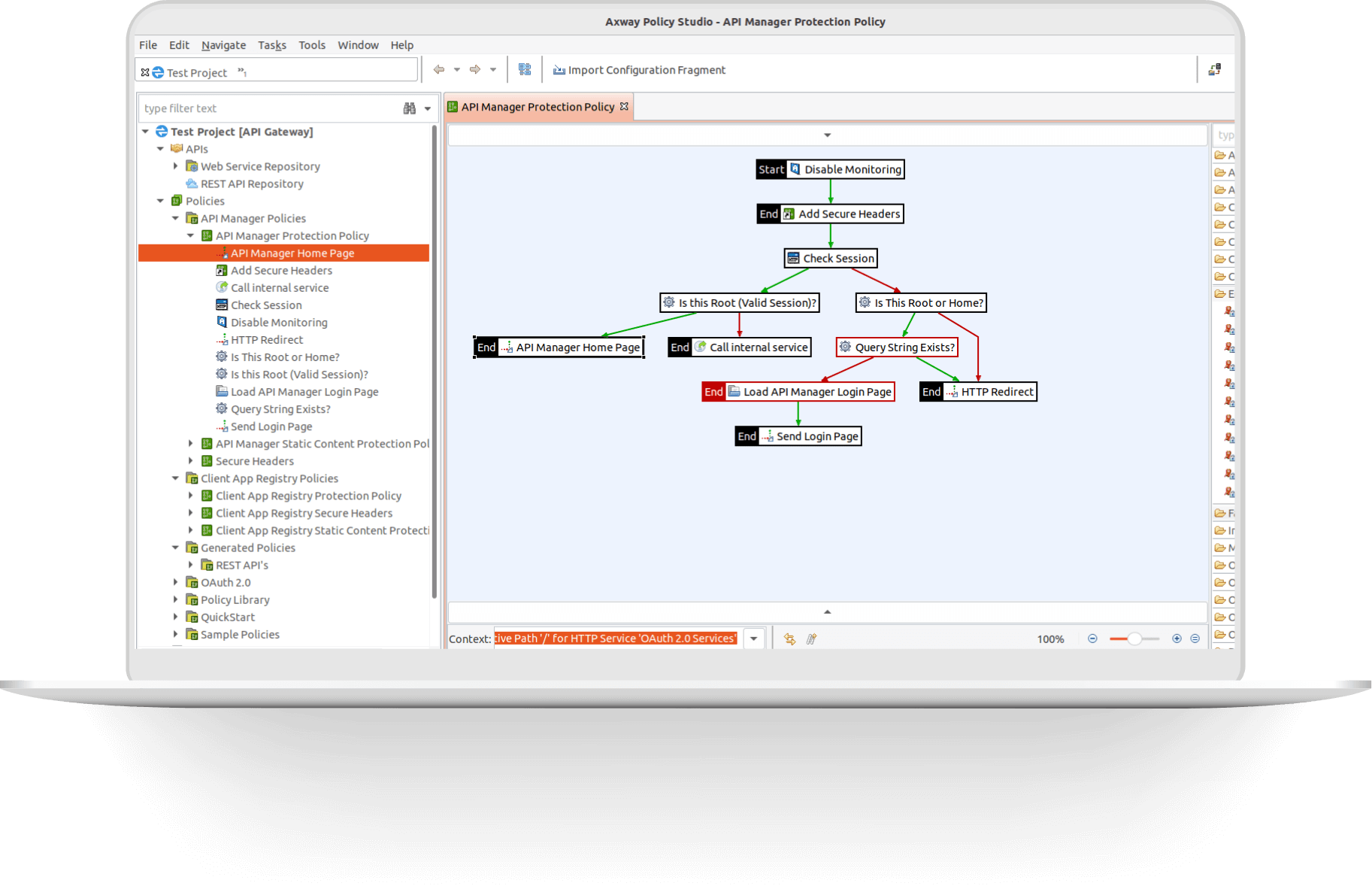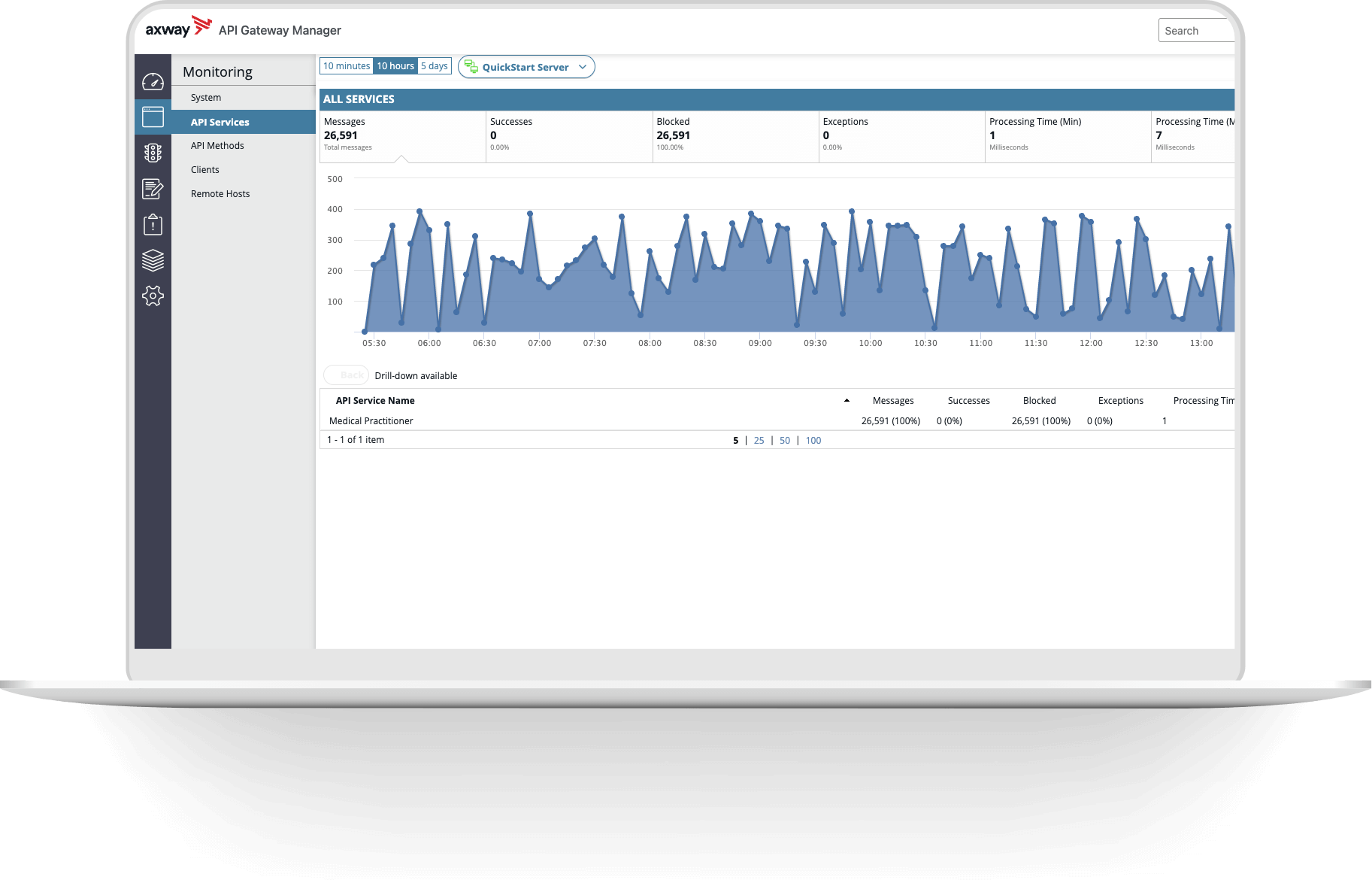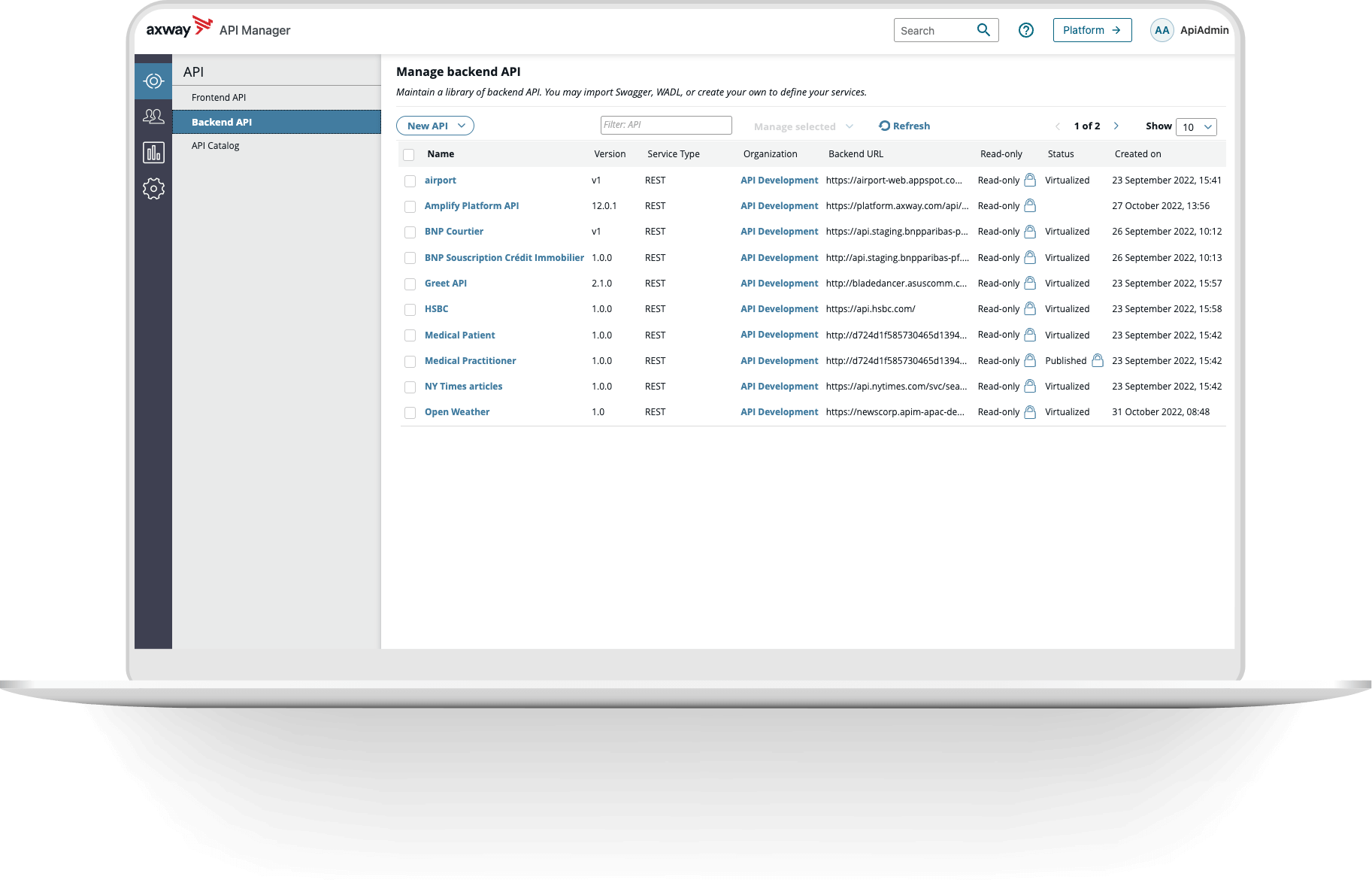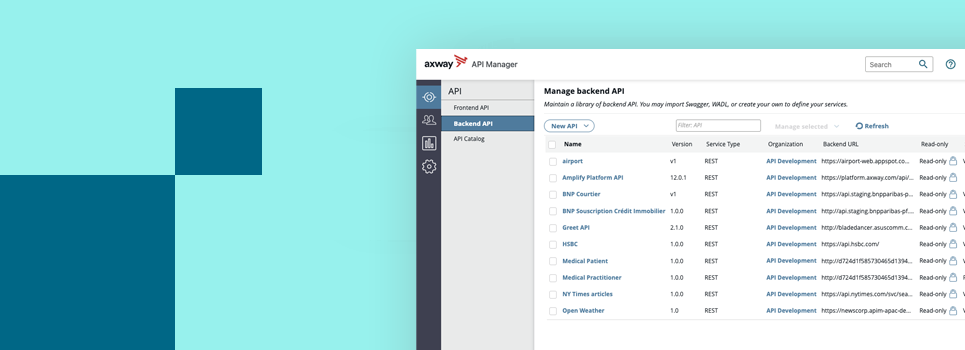Amplify API Management (APIM) features
Securely manage the full API lifecycle and simplify API discovery and use




Policy-based security gateway
Define policy, accessibility, rate limit, and quotas with over 200 prebuilt security policies

Full API lifecycle management
Manage APIs through design, testing, security, publication, consumption, and retirement

API developer portal
Empower development teams to discover and reuse APIs instead of recreating them
Amplify API Management capabilities
Get your API-fueled digital business initiatives to the market faster by simplifying API development and the user experience.
Flexible deployment
Facilitate governance and security with a proven data plane installed on-premises or in any cloud environment.
Maximum scalability
Support enterprise-level API traffic and with customized security policies
Control and visibility
Operational tooling lets you monitor and support higher levels of service
Easy automation
Use DevOps-ready, CI/CD capability to automate your development pipeline
Self-service support
Allow developers to register their own APIs using self-service capability
Customizable user experience
Fully customizable portal meets the needs and preferences of developers
Schedule a demo of Amplify API Management

Amplify API Management customer success stories
Advancing the shift from sick care to well care
CommonSpirit ensures a seamless and timely response to increased needs
Shaping personalized banking experiences
CommunityAmerica helps members achieve financial peace of mind every step of their journey
Rewarding millions of loyalty program customers
Livelo connects vital front-end and back-end services to partners to grow loyalty program
Strengthening mission-critical social security platforms
URSSAF provides a 360-degree view of services through a single API-powered portal



